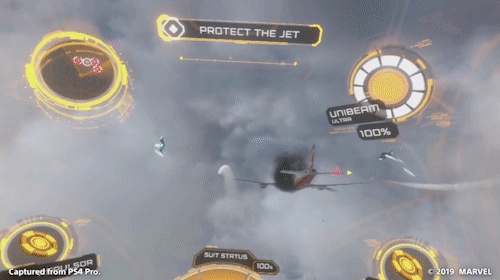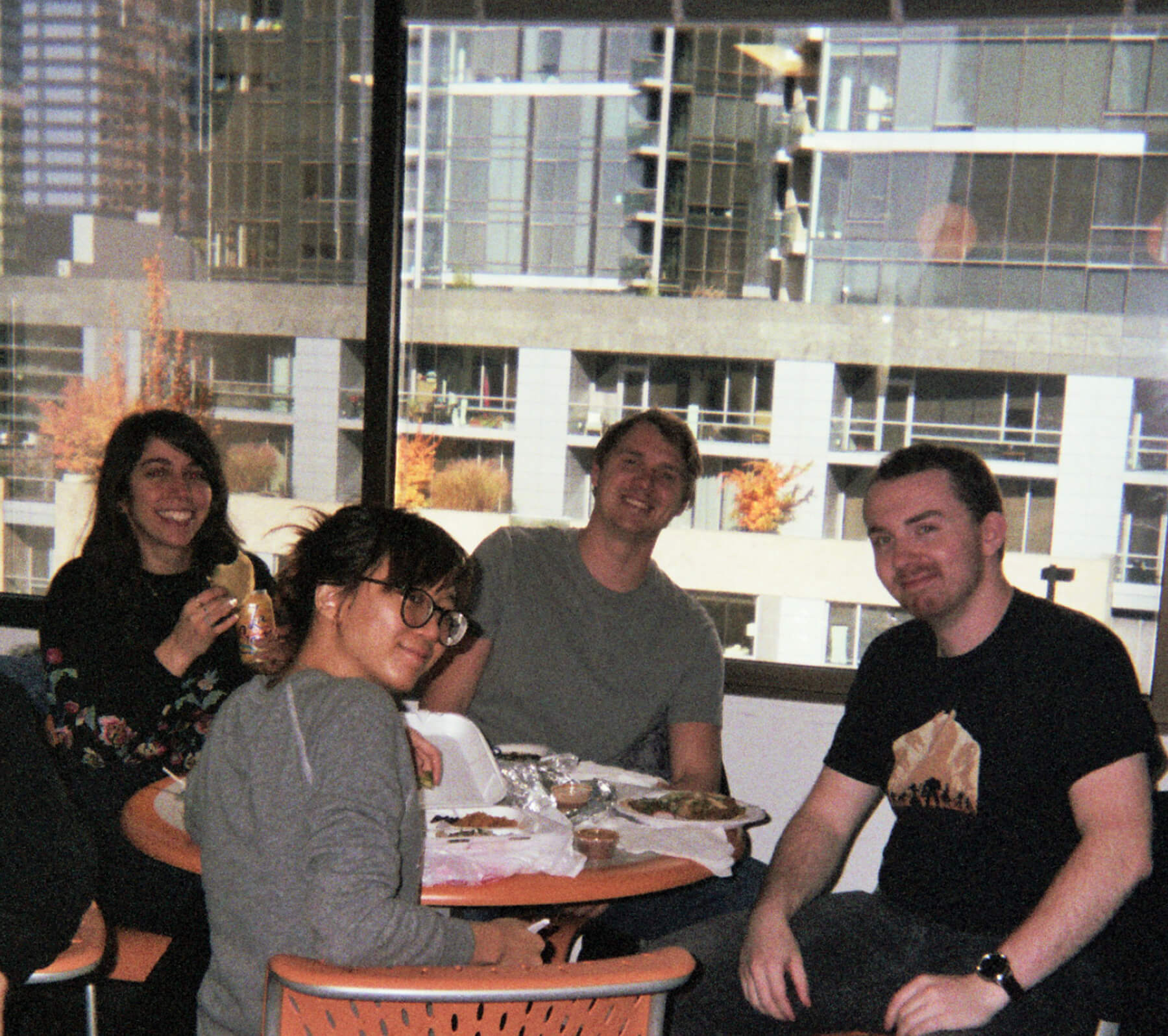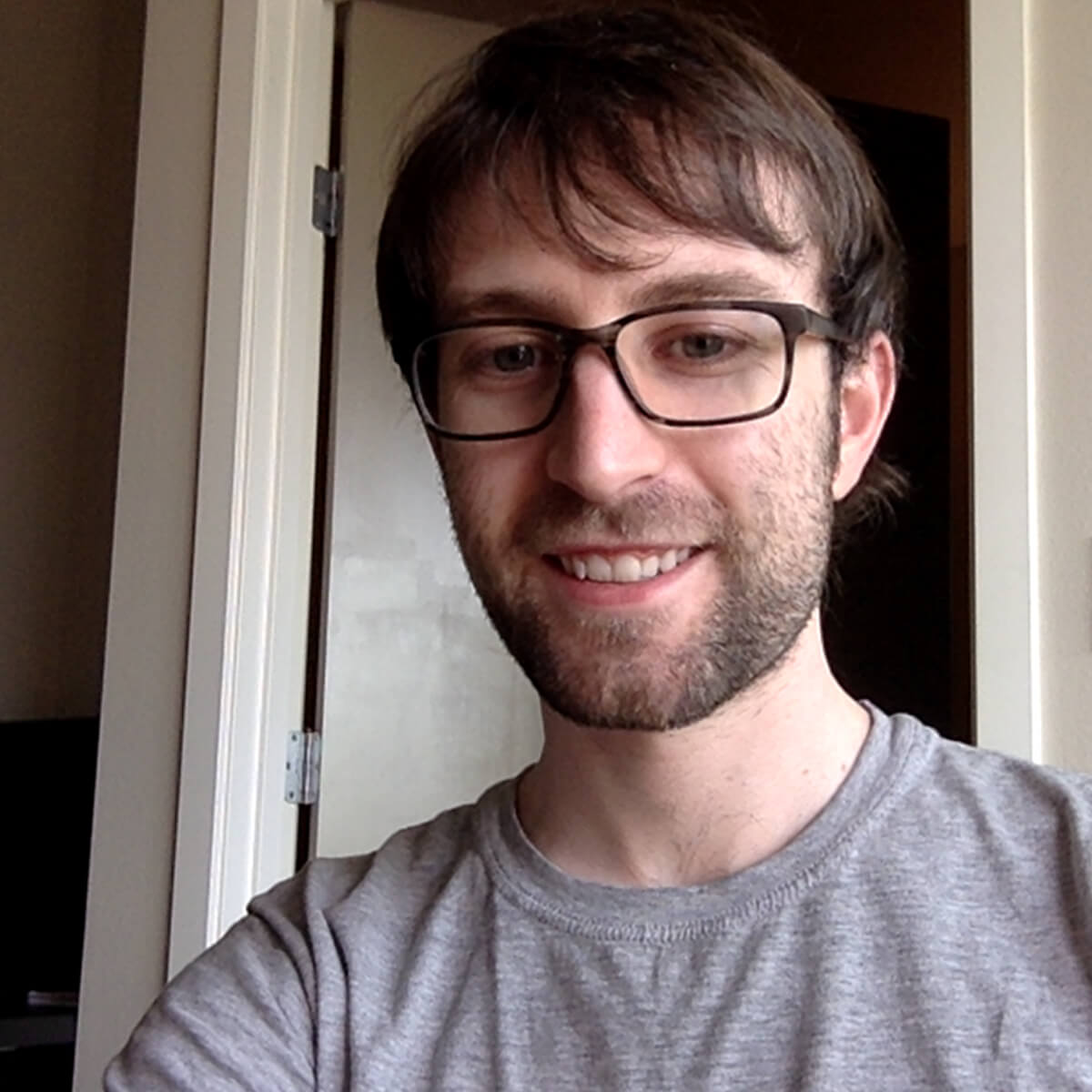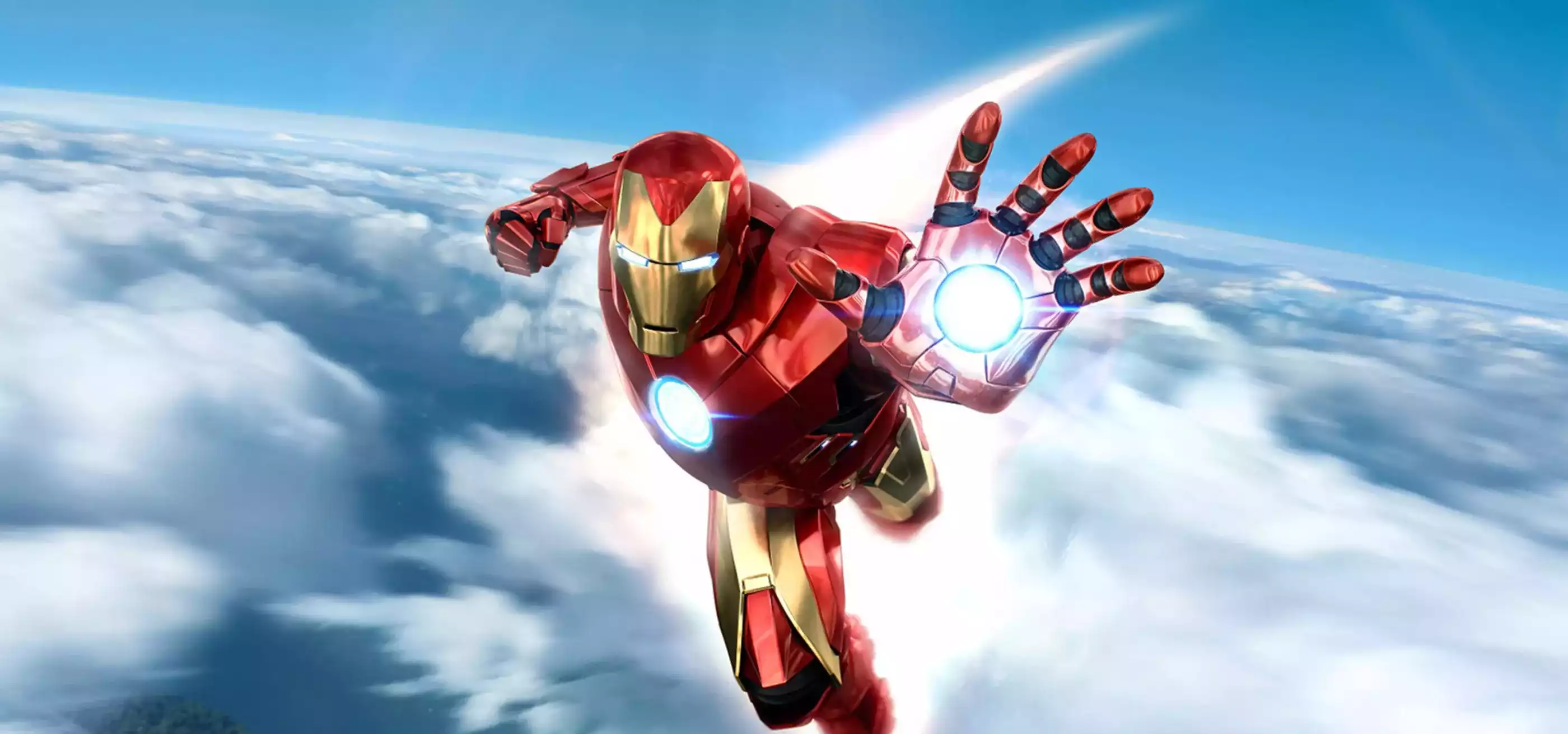When 2018 BA in Game Design graduate Kaila Harris interviewed for a design position at Camouflaj, the Bellevue studio hadn’t yet announced what game they were currently developing. “I was a huge comic book fan,” Harris says. “When I went in for my interview and I learned what the game was, it took all my willpower not to freak out. It’s an actual Iron Man game where you feel like you can fly!”
Harris wasn’t the only one excited about the prospect of Camouflaj’s latest title, Marvel’s Iron Man VR, nor would she be the only DigiPen graduate — one of nine in total — to join the studio in developing the immersive adventure, out now on PlayStation VR.
Camouflaj designers Eric Deters and David Leon, both 2018 BA in Game Design graduates, actually dove into VR for the first time with their final DigiPen game team project, Cures & Curios. When asked for their opinions on VR during their Camouflaj job interviews, they were upfront with the studio about one of the medium’s greatest challenges — movement. “By the end of Cures & Curios’ development,” Deters says, “I felt confident that any VR game that relied on teleporting as its only means of locomotion failed to properly approach VR as its own medium separate from traditional video games.”
Leon was even more direct in his answer. “I proclaimed it was a fool’s errand to use gameplay mechanics for locomotion in my interview,” Leon says. “Once I tried the game — I didn’t know what it was until I was hired — I found out I was the fool.”
While Marvel’s Iron Man VR does indeed use teleporting during its cinematics, it departs from the majority of VR titles in that movement is central to its core gameplay mechanic — fighting while flying through the air with Iron Man’s hand thrusters. “We’re in a fortunate situation where the concept fits the platform really well,” says 2019 MS in Computer Science graduate and Camouflaj gameplay engineer Riley O’Callaghan. “Consider that the input is a controller with motion tracking and no joysticks. A locomotion system based on flying with thrusters in your hand is a perfect match.”

Once Deters gave the game a try after being hired, he came to a similar conclusion. “I feel that the flight mechanics in Marvel’s Iron Man VR are fantastic because the team at Camouflaj approached the challenges of virtual reality as fundamentally new, and understood that to solve these challenges we could not simply do what had been done in traditional games in the past,” Deters says.
The fantasy of becoming Iron Man fit the VR medium in other uncanny ways too. The act of Tony Stark equipping his armored suit’s face plate is a close one-to-one experience with players putting on a VR headset — complete with a detailed virtual HUD. Despite the synchronicities, dialing in the experience so that players didn’t feel too bombarded with HUD data or enemy swarms took some work. “Finding that delicate balance of ensuring the game is challenging for players that are experienced PSVR players, but also engaging for those new to the platform was probably the toughest aspect of mission design,” Leon says.
Those on the cinematics side of the team, including Deters and Harris, had to make the other part of the Iron Man experience just as appealing. “Since a lot of the cinematics take place with Tony out of his armor, we had to focus more on how to make players feel like a genius, billionaire inventor.” Harris says. “You see more of the man behind the armor and grow to better understand his internal struggles. We had to find the balance between making Tony’s existential problems just as engaging as shooting enemies out of the sky.”

In or out of the suit, ensuring that the game was compelling no matter where players are looking — a challenge somewhat unique to VR — was another frequent consideration. “The most uniquely interesting thing about concept work for VR is how we give players control of the framing, and they can potentially look away from what we intended,” says 2019 BFA in Digital Art and Animation graduate and Camouflaj character concept artist Nitsiri Anamwathana. “Concepting for that has been a really fresh experience. We can broadly guess what most players will do, but I really enjoy working with designers and programmers to account for those who will try and touch everything — and making sure that they can.”
No matter what part of the game they were working on, the DigiPen alumni at Camouflaj had to constantly keep the deep Marvel lore surrounding Iron Man in mind when working within their respective disciplines. Some members of the team, such as 2019 BFA in Digital Art and Animation graduate and Camouflaj producer Yara Abou Samra, talked directly with people at Marvel throughout development. “I had weekly calls with Marvel, the experts of the Marvel Universe, where they would review content and give us feedback on the latest assets we provided such as characters and environments,” Abou Samra says.

Meeting Marvel’s expectations came easy for some. “I’ve been a comic book reader since I was really little, so my homework was already done,” says 2019 BFA in Digital Art and Animation graduate and Camouflaj producer Nate Messana. Others tapped their DigiPen peers for their deep Iron Man insights when questions arose. “Kaila was gracious enough to lend her encyclopedic knowledge to me,” Leon says. Harris herself admits she didn’t need much priming on the source material. “They had me play VR games instead of reading over the comics, because I already had that part down. Working on Marvel’s Iron Man VR is a dream I couldn’t have conceived of as a kid,” Harris says.
In a similar vein, working on a game with so many alumni is something Deters says he couldn’t have conceived of just a few years ago. “DigiPen faculty would always say, ‘Your fellow students will be your peers in the industry.’ But I never could have imagined how literal that statement would be,” Deters says. Camouflaj’s DigiPen-packed development team was, in some regards, part of an alumni-assisted snowball effect. Deters and Leon referred Harris to the studio — all three of whom then put in a good word when they found out Abou Samra and 2019 BS in Computer Science in Real-Time Interactive Simulation graduate Brett Cunningham applied. Later, Abou Samra recommended Anamwathana and Messana. Many of the alumni at Camouflaj even worked on the same game teams during their DigiPen days.
“There is still camaraderie and goofing off, going out to lunch, prior to the COVID-19 lockdown of course, and sharing all manner of DigiPen stories,” says Cunningham, a Camouflaj gameplay engineer. “But now the stakes are much higher and there are a lot more resources at our disposal. It requires a greater amount of self-accountability and reliance on your peers. DigiPen grads tend to be well-prepared for this leap.”
That preparation has paid off. In May, a free demo for Marvel’s Iron Man VR was released on PlayStation 4 and was glowingly received by players and publications alike, with Esquire calling it “one of the best-feeling games … on PlayStation VR to date.” According to the alumni, the positive reception has been a huge boost. “It’s so heartwarming and motivating,” Abou Samra says. “I cannot express how much passion and dedication the team has put into the game. You can see it reflected in all the praise the free PlayStation Store demo has received. I can’t wait for people to play the full game on July 3 when Marvel’s Iron Man VR is out!”
